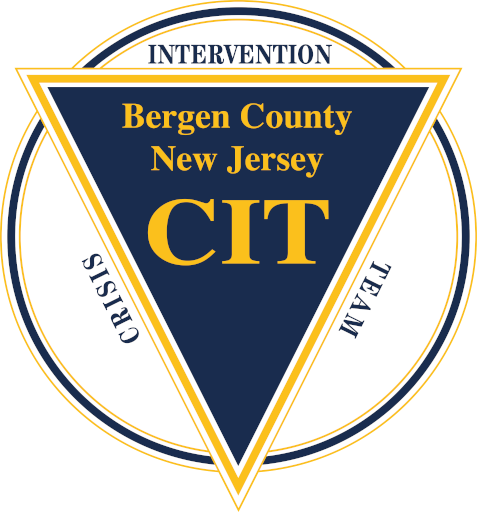Have you ever felt like your mind is trapped in a never-ending cycle of negative thoughts? EMDR (eye movement desensitization and reprocessing) therapy might be the solution to set your mind free. Used to treat PTSD and various mental health conditions, this unique structured therapy approach typically uses eye movements while simultaneously experiencing bilateral stimulation to help process traumatic memories and pave the way for healing.
This blog is to explain EMDR therapy and how it might be an option for you or a loved one.
Quick Highlights
- EMDR therapy was developed to help individuals process and heal from current and past trauma.
- It uses various techniques such as eye movement, desensitization, reprocessing & more.
- In treating trauma, EMDR is very effective. Trauma therapy can also include additional treatments like CBT (cognitive behavioral therapy) & exposure therapy in treating conditions like PTSD, anxiety & depression.
The Basics of EMDR Therapy

Eye movement desensitization and reprocessing (EMDR) therapy is a groundbreaking mental health treatment that has shown remarkable effectiveness in clinical trials. Developed by psychologist Dr. Francine Shapiro, EMDR targets traumatic memories and helps the brain heal naturally from distressing life experiences. With over 60,000 therapists trained in EMDR therapy by 2012, it’s widely recognized as a powerful tool for treating various issues. As a treatment process, the EMDR practice is a tool used by trained clinicians at CarePlus NJ.
EMDR treatment can be for:
- Posttraumatic stress disorder
- Anxiety disorders
- Dissociative disorders
- Depression
- Phobias
- Addiction
- Eating disorders
- Performance anxiety
- Chronic pain
But how does this therapy work, and who can benefit from it? We’ll delve further into the EMDR realm.
Purpose of EMDR
Picture a world where traumatic events no longer control your emotions and thoughts. That’s the ultimate goal of EMDR therapy. By using eye movements or other forms of bilateral stimulation, EMDR activates the brain’s natural healing processes, helping individuals process and heal from trauma memories and events, such as posttraumatic stress disorder (PTSD) and acute stress disorder.
EMDR Therapy Works for All Ages
EMDR therapy is a versatile treatment suitable for people of all ages, including children. It’s particularly effective for individuals who have experienced trauma or suffer from mental health conditions, such as PTSD, anxiety, and depression. By seeking mental health services like EMDR therapy, individuals can find the support they need to overcome these challenges.
Whether it’s a single traumatic event or a series of adverse life experiences, EMDR therapy can help lessen symptoms and improve overall well-being.
Techniques Used
EMDR therapy employs a variety of techniques to assist individuals in processing traumatic experiences and decreasing their distress. These techniques include:
- Eye movements
- Bilateral stimulation
- Desensitization
- Reprocessing
- Resource development and installation
- Cognitive restructuring
EMDR therapy:
- Stimulates both brain hemispheres
- Enables more efficient processing of traumatic recollections
- Diminishes negative symptoms
- Facilitates a path towards a more fulfilling life
The Eight Phases of EMDR Therapy

Healing is a journey, and EMDR therapy takes you through eight distinct phases: History taking, client preparation, assessment, desensitization, installation, body scan, closure and reevaluation of treatment effect. Each phase has a specific purpose and goal in the treatment and natural healing process. From assessing your symptoms and history to reevaluating your progress, these phases ensure that your EMDR therapy experience is tailored to your unique needs and goals.
Below we explain and examine the eight stages integral to a typical EMDR therapy session.
History Taking and Treatment Planning
During the first phase of trauma treatment, your therapist will review your symptoms, medical history, and identify memories to address during treatment. This sets the foundation for a successful EMDR therapy session, ensuring that the focus remains on the most relevant and impactful memories.
Knowledge of the context and history of your experiences enables your therapist to formulate a treatment plan tailored to address the underlying causes of your distress.
Client Preparation
In phase 2, your therapist will explain the EMDR theory and what to expect in upcoming sessions. They will also teach you coping techniques to manage any emotional distress that may arise during the therapy process.
EMDR therapy preparation aids in creating a sense of comfort and confidence as you begin this transformative journey.
Assessment
Phase 3 is all about selecting a specific memory and its relevant aspects to focus on during treatment. Your therapist will guide you through the process of identifying a “targeted memory”, as well as any associated negative emotions, beliefs, physical sensations or other distressing life experiences that are related.
This careful assessment ensures that your EMDR therapy sessions are tailored to address the most distressing events of your experience.
Desensitization and Reprocessing
Phases 4 and 5 are the heart of EMDR therapy, focusing on desensitizing and reprocessing the targeted memory. During these phases, your therapist will guide you through a series of eye movements or other bilateral stimulation techniques while you focus on the memory and associated emotions.
EMDR aims to reduce the distress and negative beliefs associated with the trauma memory, allowing you to heal and move forward.
Installation of Positive Beliefs
As you move through phase 5, your therapist will help you replace the negative beliefs associated with the traumatic memory with positive ones. This process, known as installation, reinforces the new positive belief, until it’s fully accepted as true.
EMDR therapy, by reshaping your beliefs about the memory, allows you to view yourself and your disturbing memories or experiences from a refreshed, more affirmative perspective.
Body Scan
In phase 6, your therapist will guide you through a scan of your body, focusing on any physical sensations or discomfort related to the memory or disturbing event. This process helps you become more aware of your body and any lingering tension or distress.
Addressing these psychological and physical symptoms, particularly the physical symptoms stemming from sensations, permits EMDR therapy to incorporate both mind and body sensations within the healing process, helping create a more holistic approach to recovery.
Closure
Phase 7 is all about achieving closure and emotional balance at the end of each EMDR therapy session. Your therapist will work with you to ensure that you feel stable and prepared for any negative thoughts or feelings that may arise between sessions.
This phase plays a pivotal role in preserving your emotional health and facilitating continued progress on your path to creating positive belief and healing.
Reevaluation of Treatment Effect
The final phase, reevaluation, involves assessing your progress and determining whether further treatment, such as reprocessing therapy, is necessary or if new memories need to be targeted. At the start of each subsequent session, your therapist will check in with you to discuss your feelings about the previous session and any lingering issues or targets that need to be addressed.
Continuous evaluation ensures the ongoing efficacy and personalization of your therapy.
Benefits and Limitations of EMDR Therapy
EMDR therapy offers a range of benefits, from its proven effectiveness in treating PTSD to the rapid results it can produce. However, it’s important to be aware of its limitations and potential side effects, such as emotional distress and increased anxiety in the short term.
An understanding of the advantages and limitations of EMDR therapy empowers you to make an informed decision regarding its suitability for your needs.
Effectiveness
While EMDR therapy is most well-known for its success in treating post traumatic stress disorder, it has also shown effectiveness in addressing other mental health conditions, such as chronic pain, panic disorder, addiction, depression, and phobias. A 2021 systematic review evaluating the effectiveness of EMDR therapy had findings that EMDR therapy may be considered an effective treatment for improving depression. It essential to consider mental health symptoms when evaluating the effectiveness of EMDR therapy. Findings show that EMDR could be considered an alternative to first-line treatments for depression.
Keep in mind, the effectiveness of assorted treatments may differ according to individual needs and preferences.
Speed of Results
One of the most appealing aspects of EMDR therapy is its potential for rapid results. Some individuals may begin to experience positive changes in their symptoms after just one session, while others may require a few more sessions to see significant improvements.
Bear in mind that studies on long-term effectiveness continue, and results may fluctuate based on the individual and the specific issue being treated, as noted by the World Health Organization.
Potential Side Effects
As with any therapy, EMDR may cause some side effects, including increased anxiety, vivid dreams, flashbacks, and emotional distress during or between sessions. Discussing these potential side effects with your therapist and contemplating the suitability of EMDR therapy for your needs and preferences is crucial.
In some cases, side effects may be temporary and subside as you progress through treatment. Many see the benefits outweighing the side effects. Engaging with a therapist that has been trained in EMDR or carries an EMDR certification is the best way to go over the pros and cons of EMDR therapy.
Comparing EMDR Therapy to Other Treatments
When considering EMDR therapy, it’s helpful to compare it to other psychological treatments used, such as cognitive-behavioral therapy (CBT) and exposure therapy. Studies have shown that EMDR therapy can be just as successful as these other treatments in reducing PTSD symptoms, and it has also been found to be effective in treating conditions like anxiety disorders and depression.
The effectiveness of various treatments may differ based on individual needs and preferences, underlining the importance of investigating all possible options.
Finding a Qualified EMDR Therapist
Securing optimal results from EMDR therapy necessitates finding a qualified therapist. This means seeking a licensed mental health professional with specialized training and/or certification in EMDR therapy and other therapies, such as those recognized by the American Psychiatric Association.
You can begin your search for a qualified EMDR therapist by:
- Checking with your insurance provider
- Asking for referrals from friends or family
- Using online directories
- Researching therapist credentials
Finding a qualified EMDR therapist is suggested before tackling traumatic stress.
Is EMDR Therapy Controversial?
While EMDR therapy has proven to be effective for many individuals with post traumatic stress disorder, there is still research surrounding effectiveness as adjunct therapies for other mental health conditions.
Nevertheless, EMDR therapy continues to be a valuable treatment option for many people dealing with trauma, panic disorder and other mental health conditions. Veterans Affairs offers quite a bit of information at their National Center for PTSD.
Post Traumatic Stress Disorder and EMDR Therapy at CarePlus NJ
EMDR therapy is a unique and effective treatment option for individuals who have experienced trauma or suffer from various mental health conditions. With its proven effectiveness in treating PTSD, rapid results, and various treatment effects, EMDR therapy offers a powerful tool for healing. CarePlus NJ offers counseling and has trained trauma specialists that can help determine if EMDR therapy is an option and right fit for your needs. If you or a loved one is needing help – please contact us today.
Frequently Asked Questions
What are the 8 stages of EMDR?
EMDR is an eight-phase treatment method, which includes: History Taking, Client Preparation, Assessment, Desensitization, Installation, Body Scan, Closure and Reevaluation of Treatment Effect. It’s a comprehensive treatment method that has been found to be effective in helping clients work through traumatic events.
Why is EMDR so powerful?
EMDR is a powerful technique due to its ability to naturally help the brain process unhealed trauma memories, resulting in decreased emotional charge and linkage to positive memories. This technique can be used to help people who have experienced trauma, anxiety, depression, and other mental health issues. It can also be used to help people who are struggling with addiction, phobias, and other issues.
How does EMDR work for anxiety?
EMDR works by helping people reprocess traumatic information to reduce their anxiety symptoms. It can help treat phobias, performance anxiety, social situations, panic attacks and OCD, and usually requires between 2 to 15 sessions.
Does EMDR therapy work for everyone?
EMDR therapy may not work for everyone, so it’s important to talk to a qualified therapist about the potential risks and benefits before starting. It is important to understand the potential risks and benefits of any therapy before starting, and EMDR is no exception.
Sources:
https://www.ncbi.nlm.nih.gov/pmc/articles/PMC8043524/
https://pubmed.ncbi.nlm.nih.gov/33638952/
https://en.wikipedia.org/wiki/Eye_movement_desensitization_and_reprocessing
https://www.ncbi.nlm.nih.gov/pmc/articles/PMC8488430/
https://www.frontiersin.org/articles/10.3389/fpsyg.2018.01395/full
https://www.ptsd.va.gov/understand_tx/emdr.asp
https://www.ptsd.va.gov/professional/treat/txessentials/emdr_pro.asp
https://www.forbes.com/health/mind/what-is-emdr-therapy/
https://www.ncbi.nlm.nih.gov/pmc/articles/PMC3951033/
https://www.washingtonpost.com/wellness/2023/07/14/emdr-trauma-anxiety-depression-ptsd-treatment/
https://www.medicalnewstoday.com/articles/325717

Jen Velten, LPC, ACS, CCTP, DRCC- Director of Trauma Services
Jen Velten graduated John Jay College of Criminal Justice in 2015 with an MA in Forensic Mental Health Counseling and became a Licensed Professional Counselor in 2019. She is licensed in the State of New Jersey with 8 years of experience working with youth and families in the mental health field. She was a school counselor for 3 years as well as a clinician with Care Plus in the Child/Family Division for the past 8 years. Jen has focused her expertise on helping children and adults to overcome complex trauma experiences as well as work with the LGBTQ+ community. Jen is trained in TF-CBT, YMHFA, PFA and most recently became certified in EMDR.









